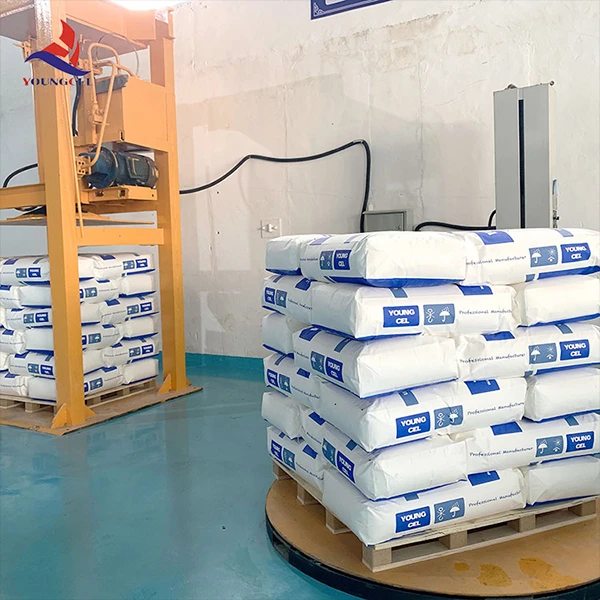Understanding Cellulose Polymer Its Role, Properties, and Applications
Cellulose, a fundamental organic polymer, is one of the most abundant biopolymers on Earth. Structurally, it is a carbohydrate composed of linear chains of glucose units linked by β-1,4-glycosidic bonds. This natural polymer serves as a structural component in the cell walls of plants, contributing to the rigidity and strength of plant tissues. Its unique characteristics make cellulose an essential material across various industries, including textiles, pharmaceuticals, and bioplastics.
The Structure and Properties of Cellulose
Cellulose is characterized by its high tensile strength and insolubility in water, making it a critical material for plants’ structural integrity. The polymer's crystalline structure is formed through extensive hydrogen bonding between chains, giving cellulose its rigidity and stability. Additionally, the degree of polymerization can vary, leading to different physical properties. For example, cotton, which is nearly pure cellulose, has a different texture and strength than wood pulp, which contains lignin and hemicellulose alongside cellulose.
One of the most remarkable aspects of cellulose is its biodegradability. As a natural polymer, it can break down into glucose through microbial action, making it an environmentally friendly option compared to synthetic polymers. This property is increasingly important in a world grappling with plastic pollution, as industries look for sustainable alternatives to fossil-based materials.
Applications of Cellulose Polymer
The versatility of cellulose extends to numerous applications, reflecting its importance in modern technology and various fields
.1. Textile Industry Cellulose is the primary component in cotton and is also used in the production of regenerated fibers like rayon and lyocell. These fibers are prized for their comfort and breathability and are often blended with other materials to enhance fabric performance.
2. Food Industry In the food sector, cellulose derivatives serve as thickening agents, stabilizers, and emulsifiers. Cellulose gum, for instance, is commonly used in ice creams and salad dressings to maintain texture and viscosity.
cellulose polymer

3. Pharmaceuticals In pharmaceuticals, cellulose plays a vital role as an excipient, aiding in drug formulation and delivery. Microcrystalline cellulose is frequently used as a binder in tablets, providing necessary cohesion to powdered ingredients. Additionally, cellulose ethers, such as hydroxypropyl methylcellulose (HPMC), are utilized as film-forming agents in capsules.
4. Bioplastics With the rise of bioplastics as an alternative to traditional petrochemical plastics, cellulose is gaining attention due to its renewable origins and biodegradability. Researchers are exploring cellulose nanocrystals and nanofibers to enhance the mechanical properties of bioplastics, paving the way for more sustainable packaging solutions.
5. Construction Cellulose is also employed in the construction industry, particularly in the form of cellulose insulation. Made from recycled paper or wood products, cellulose insulation is valued for its thermal efficiency and soundproofing capabilities.
The Future of Cellulose Polymer
As sustainability continues to take center stage in global discussions, cellulose polymer is poised for further development and innovation. Advances in technology have led to the creation of cellulose-based composites that combine strength, flexibility, and biodegradability. The search for alternative, eco-friendly materials is driving research into the potential of cellulose in various sectors, including automotive parts, electronics, and even medical devices.
Moreover, ongoing studies into the genetic modification of plants to enhance cellulose production or alter its properties offer promising avenues for future applications. By manipulating plant genes, scientists aim to create cellulose varieties with improved yield, reduced lignin content, or enhanced fiber quality.
Conclusion
In conclusion, cellulose polymer stands at the intersection of nature and technology. Its fundamental role in plant structure and its myriad applications across industries underline its importance in both traditional uses and emerging fields. As we navigate challenges like environmental sustainability and the need for innovative materials, cellulose offers a promising pathway forward. Its inherent properties, coupled with ongoing research and development, ensure that cellulose polymer will play a crucial role in shaping our future. As we continue to harness this abundant resource, we open doors to sustainable practices that respect both our planet and its population.
-
The Application and Significance of Construction RdpNewsMay.19,2025
-
Industrial Grade HpmcNewsMay.19,2025
-
Building Coating Adhesive Building Coating Adhesive HpmcNewsMay.19,2025
-
Application Of Hpmc For Detergent For Detergent In DetergentsNewsMay.19,2025
-
Application Of Hpmc Cellulose In Cement-Based MaterialsNewsMay.19,2025
-
Application Of High Quality Hpmc For Construction In The Field Of ConstructionNewsMay.19,2025




